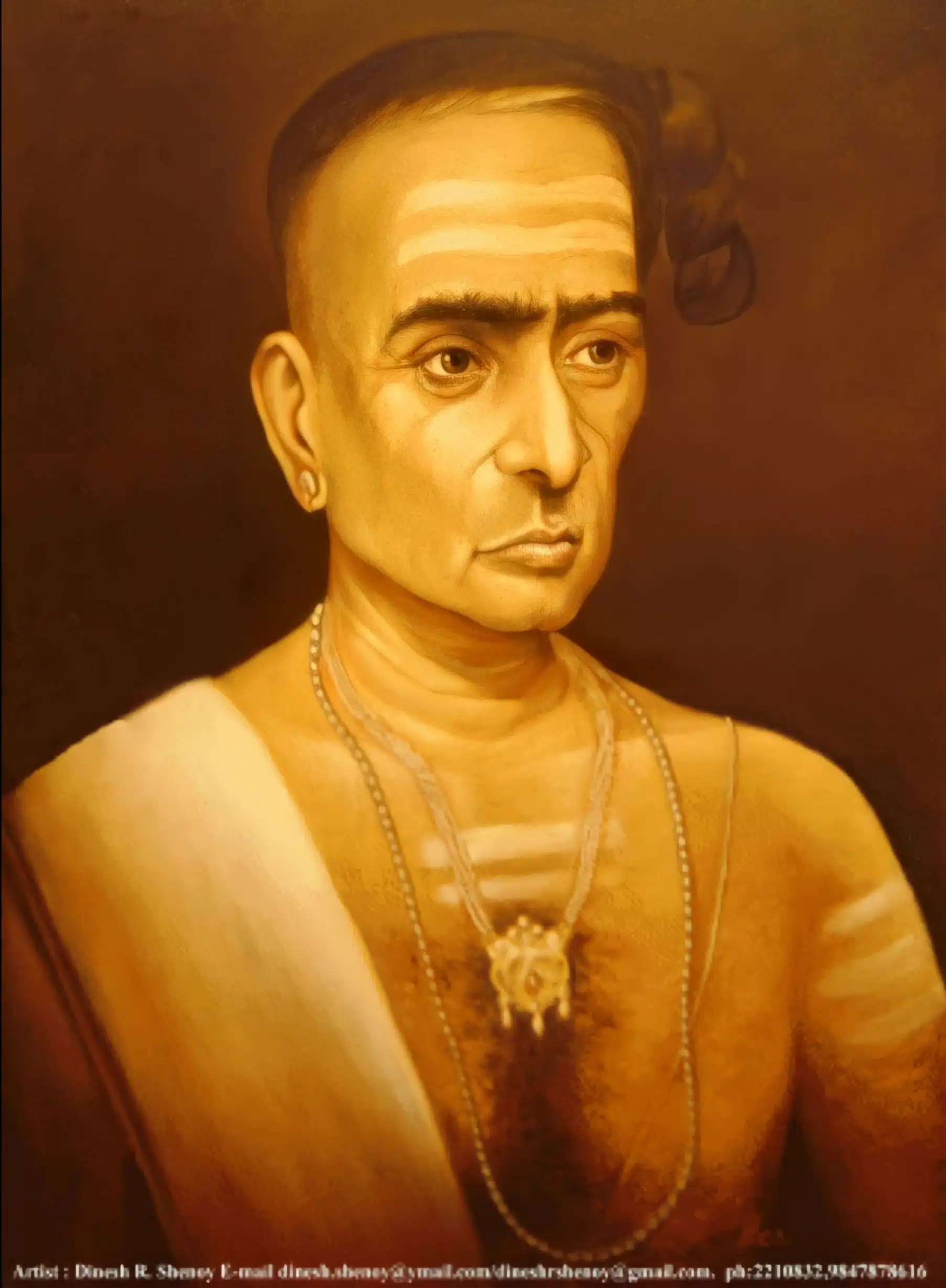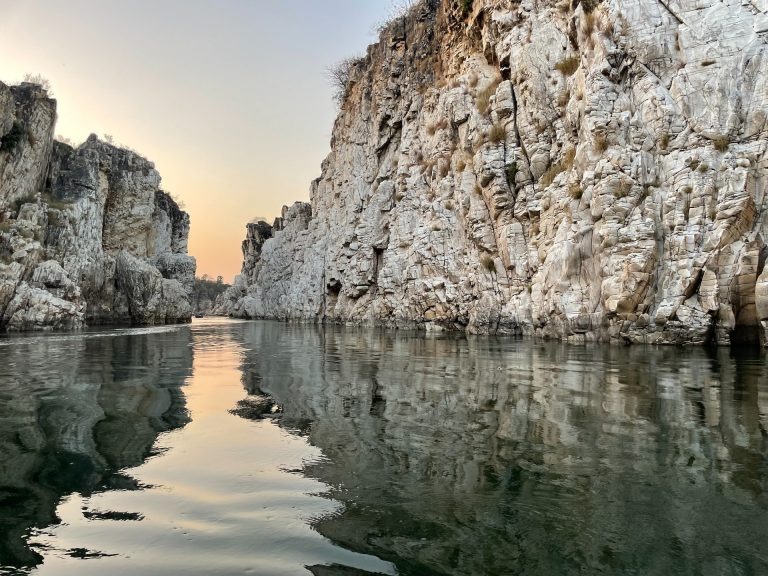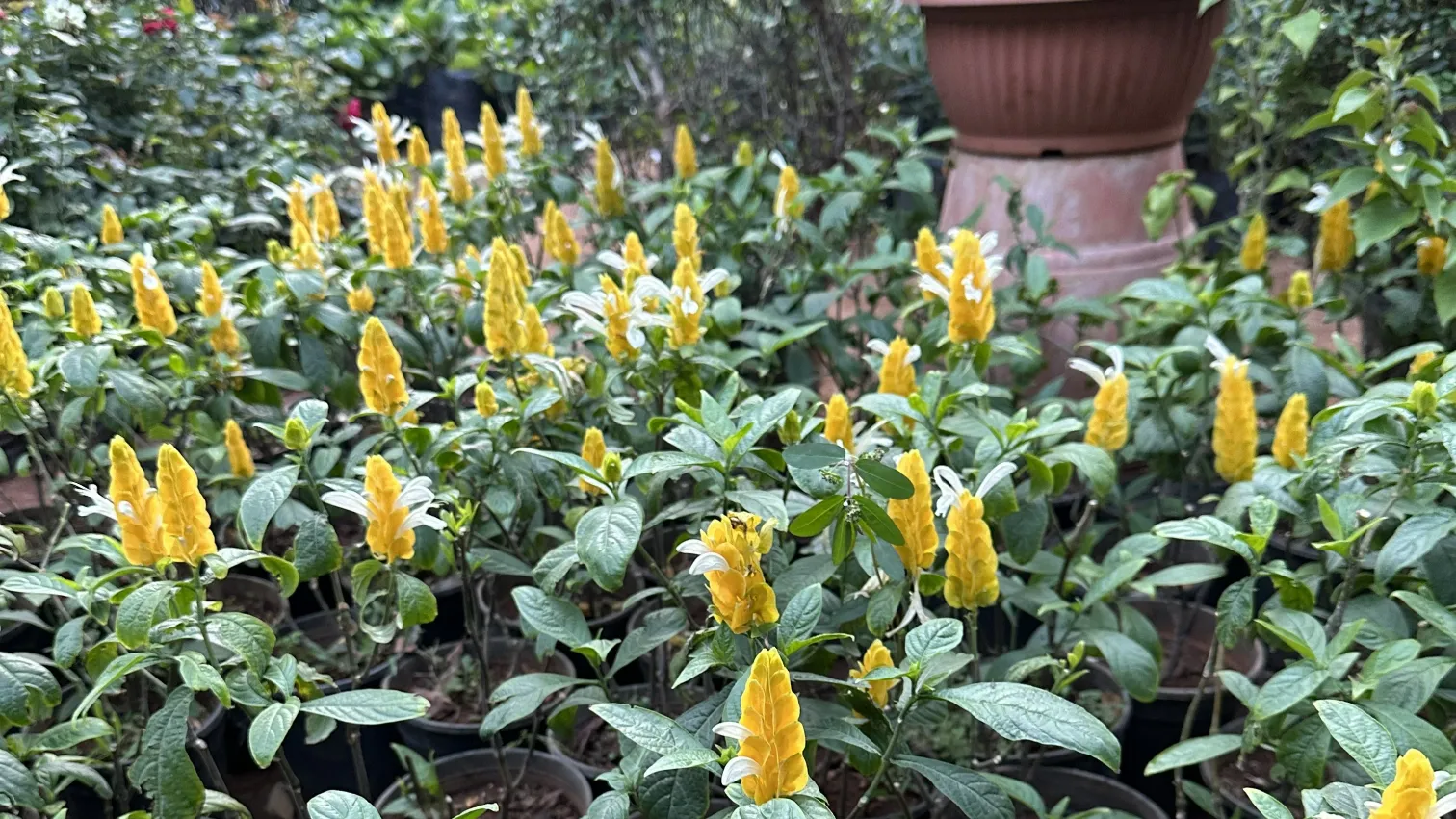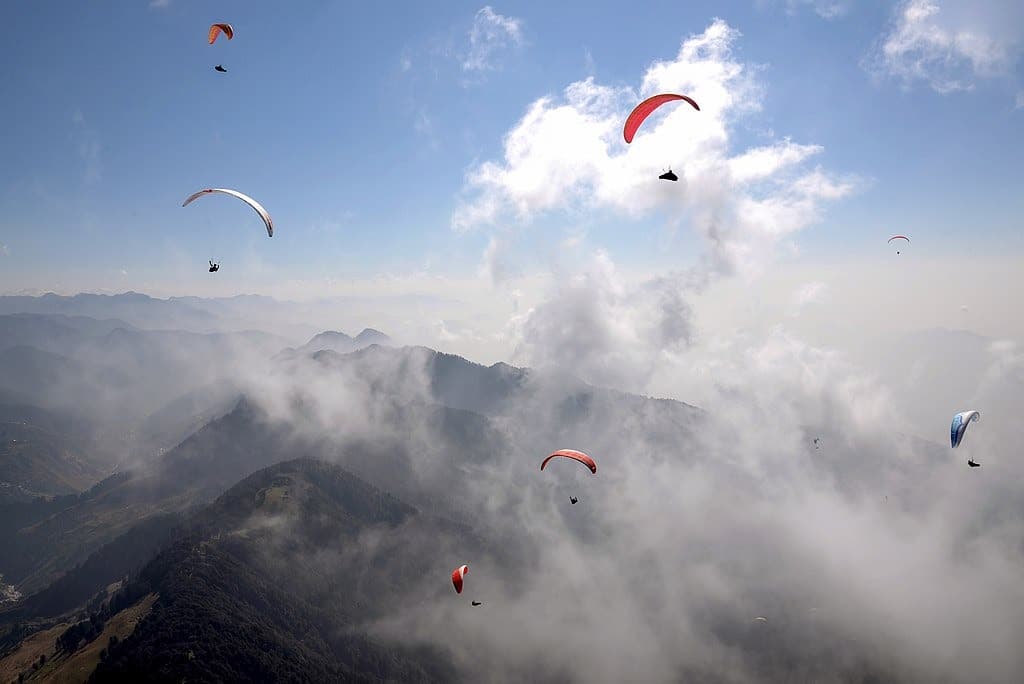Thousands gather, anticipation buzzing through the air, capturing the moment poised to unfold. Phones are raised high, not to capture the moment but to become part of a story centuries in the making. Suddenly, the gates swing open, heralding the arrival of the star: a majestic elephant adorned with vibrant flowers and gleaming gold. A trumpet of joy, its trunk lifted high, greets the roaring cheers of the crowd. This grand entrance is just the beginning. Accompanied by a chorus of 15 elephants on each side, the spectacle is a vision of unity and splendour, each elephant proudly bearing a deity and an ornate parasol atop its head. The air vibrates with the rich melodies of traditional music, setting the stage for the iconic Thrissur Pooram – the mother of all festivals, a symphony of culture, tradition, and communal joy that captures India.
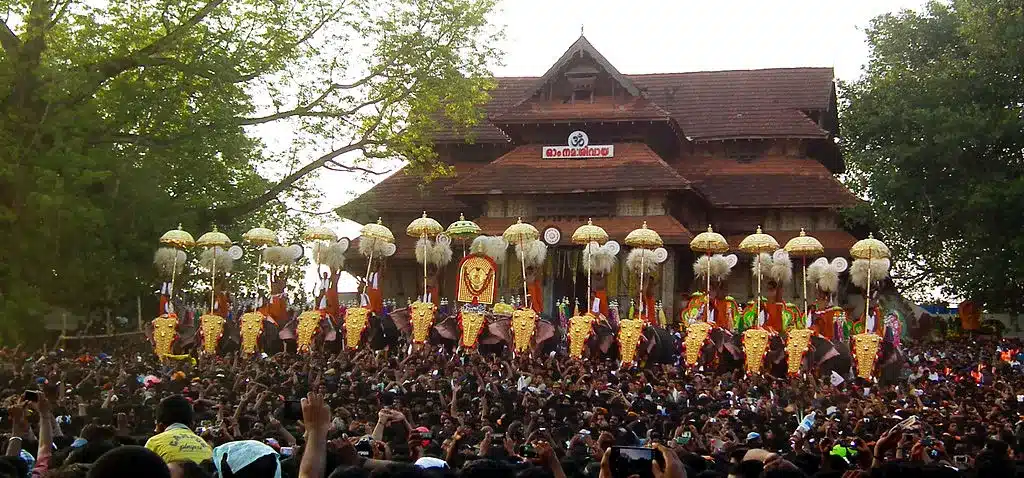
The greatest gatherings in Asia
Kerala embodies beauty in many forms – from its serene backwaters and lush coconut groves to the rich scents of its cuisine. It’s also home to Asia’s most magnificent gathering, Thrissur Pooram. The festival is held in honour of Lord Shiva, the presiding deity of the Vadakkunnathan Temple located in Thrissur city. The term “Thrissur Pooram” is a combination of two words: “Thrissur”, which is the name of the city in Kerala where the festival is held, and “Pooram”, which is a Malayalam word that refers to a group or a meeting.
So, in essence, Thrissur Pooram means the meeting or gathering of Thrissur, which is an appropriate name for this festival as it brings together people from different communities, religions, and walks of life to celebrate and rejoice together. This festival has not only inspired numerous songs and Thrissur Pooram movies but has also become an iconic symbol of the region. However, to truly grasp its essence, you need to witness it firsthand. In 2024, the Thrissur Pooram date is 19th April. That’s why this detailed guide aims to introduce you to the festival’s wonders and why you should consider booking a cab from Kochi to immerse yourself in this incredible event.

Thrissur Pooram history – Kerala’s grandest festival’s evolution
Before Thrissur Pooram became the spectacle it is today, the Aarattupuzha Pooram held the title of Kerala’s largest temple festival. Temples from across the district would join in a grand procession, showcasing thidambu or kolam (decorated images or replicas of deities). However, one year, due to unforeseen weather delays, many temples were barred from participating, sparking discontent among their authorities. In response, they turned to Rama Varma Kunjipilla Thampuran, known affectionately as Sakthan Thampuran, the Maharaj of Cochin, to voice their grievances.
Sakthan Thampuran saw an opportunity in this dispute to create a new tradition. He organized a festival that would include about ten temples located near the Vadakkumnathan temple. The Vadakkunnathan Temple is the center of all the temples and hence the celebrations take place here. His vision was for these temples to honour Lord Shiva, the presiding deity of Vadakkumnathan, marking the start of what would be a ceremonial event lasting to this day. The festival brought together temples like Paramekkavu, Thiruvambadi, Kanimangalam, Karamucku, Laloor, Choorakottukara, Panamukkampally, Ayyanthole, Chembukkavu, and Neythilakavu. This gathering has now been celebrated as Thrissur Pooram for over 200 years, marking a significant evolution in the festival’s history.
The pillars of Thrissur Pooram – Key participants and their roles
In the heart of Thrissur Pooram’s festivities, Sakthan Thampuran’s vision divided the participating temples into two primary groups: the Eastern Group, led by Paramekkavu Temple, and the Western Group, headed by Thiruvambady Temple. These temples stand as the festival’s chief participants, around which the entire event revolves. Accompanying them are the “cherupooram” – eight neighbouring temples that enrich the festival with their unique contributions, further amplifying the grandeur of Thrissur Pooram.
Eastern Group
Paramekkavu Bhagavathi Temple: The forefront of the Eastern Group, this temple’s vibrant participation sets the tone for the group’s festivities.
Chembukkavu Bhagavathy Temple: Known for its historical significance and spiritual aura, it adds depth to the Eastern Group’s processions.
Panamukkumpally Sastha Temple: Brings a blend of martial art traditions and spiritual practices to the celebrations.
Choorakkottukavu Bhagavathy Temple: Its participation is marked by unique rituals and offerings, contributing to the diversity of the Pooram.
Pookattikkara – Karamukku Bhagavathy Temple: Renowned for its cultural contributions, it enriches the festival’s tapestry with traditional arts and performances.
Western Group
Thiruvambadi Sri Krishna Temple: The anchor for the Western Group, this temple’s participation symbolizes unity and devotion, setting a devotional tone for the group’s activities.
Kanimangalam Sastha Temple: Brings to the festival a blend of tradition and mythology, celebrated through its distinct ceremonies.
Laloor Bhagavathy Temple: Known for its ancient roots, it adds a layer of historical richness to the festivities.
Sree Karthyayani Temple at Ayyanthole: Its involvement highlights the festival’s inclusivity and diversity in worship practices.
Nethilakkavu Baghavathy Temple: Closes the circle with its strong community ties, showcasing the local faith and traditions that are central to Thrissur Pooram.
Celebration unveiled – The grandeur of Thrissur Pooram
Thrissur Pooram, often hailed as Kerala’s most anticipated annual festival, lights up the skies every Medam month, according to the Malayalam Calendar. This period typically aligns with April or May in the Gregorian calendar, with the festival’s climax occurring on the Medam full moon day. The historic Vadakkunnathan (Shiva) Temple in Thrissur plays host to this grand event, alongside a multitude of Hindu temples across Kerala, which don radiant decorations to join in the celebration.
This week-long festival commences with the vibrant sounds of Melam, leading into the Kodiyettam ceremony where flags hoists high, signalling the start of the festivities. Highlights include traditional folk dances, a mesmerizing elephant parade, the awe-inspiring fireworks display, and the soul-stirring rhythms of panchavadyam. People stand witness to the elaborate band of artists who play for over four hours for the ilanjithara melam, representing the majestic musical tunes of Kerala. More than 200 instrumentalists participate in this ensemble whose music invigorates the thousands who gather at the ground.
Elephants hold a place of honor in the festivities, adorned in Nettipattam (elaborate golden headgear), jingling decorative bells, and an array of ornaments, capturing the essence of the celebration. A unique ritual, Poora Vilambaram, sees one of these majestic creatures ceremoniously place the idol of ‘Neithilakkavilamma’ atop its back and gently push open the south gate of the temple with its legs, embodying the spiritual heart of Thrissur Pooram.
Celebrating Thrissur Pooram – A guide to the festive ceremonies
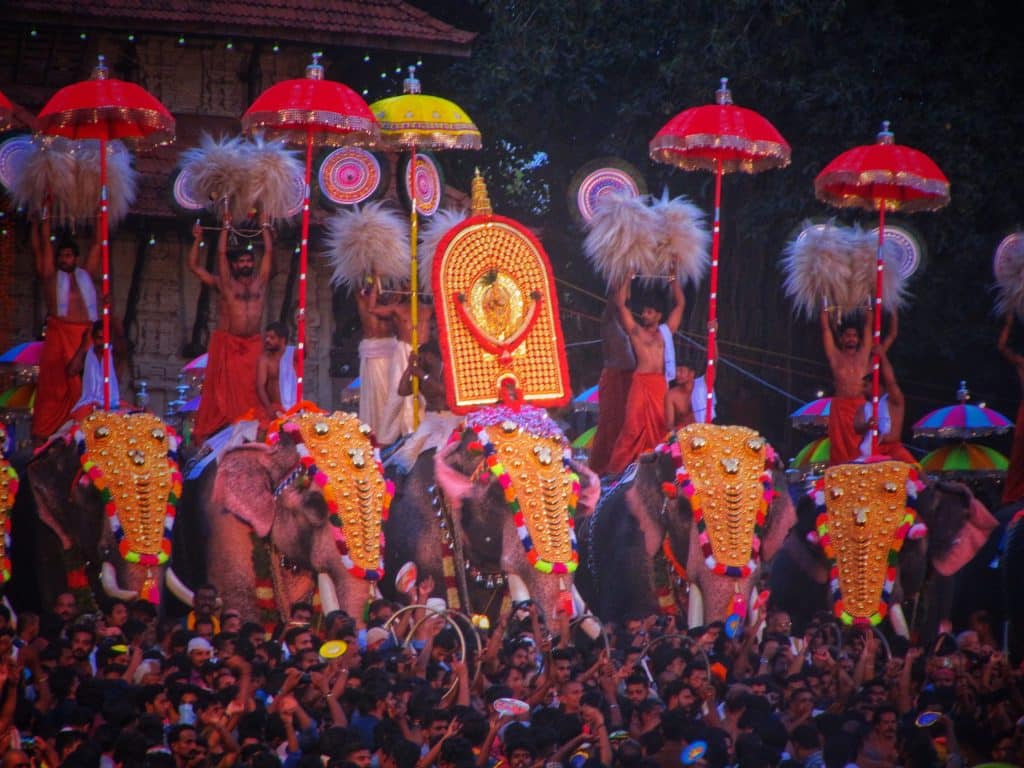
Initiation of Festivities – Flag hoisting (Kodiyettam)
Thrissur Pooram unfolds over seven days, commencing with the Kodiyettam ceremony, where flags are hoisted to officially mark the beginning of the celebrations. Unique to Thrissur Pooram, the flag is raised on a specially crafted post made from the Arecanut tree, prepared by a carpenter who observes a week-long vow and performs a ground blessing ceremony. This ritual is carried out by all ten participating temples, signaling the start of the festivities.
Thrissur Pooram exhibition
Positioned near the Vadakunnathan Temple at Thekkinkadu Ground, the Thrissur Pooram Exhibition is a grand trade fair that attracts visitors from across South India. Running from 10 a.m. to 10 p.m., the exhibition features around 200 stalls and 80 pavilions, including agricultural, industrial, educational, and cultural showcases, along with amusement rides for children and a variety of food stalls.
The grand pandals of Pooram
The festival sees the construction of three massive pandals around the Swaraj Ground, with two orchestrated by Thiruvambady Temple and one by Paramekkavu Temple. These pandals, located at strategic points across the city, serve as the epicenters for the Pooram’s numerous events.
Sample Vedikettu – The prelude to fireworks
A highlight of the festival, the Sample Vedikettu on the fourth day is a spectacle of fireworks that preludes the main pyrotechnic display. Commencing at 7:30 p.m., this hour-long show features a friendly rivalry between Thiruvambady and Paramekkavu temples, each striving to outdo the other with breathtaking fireworks at Swaraj Round.
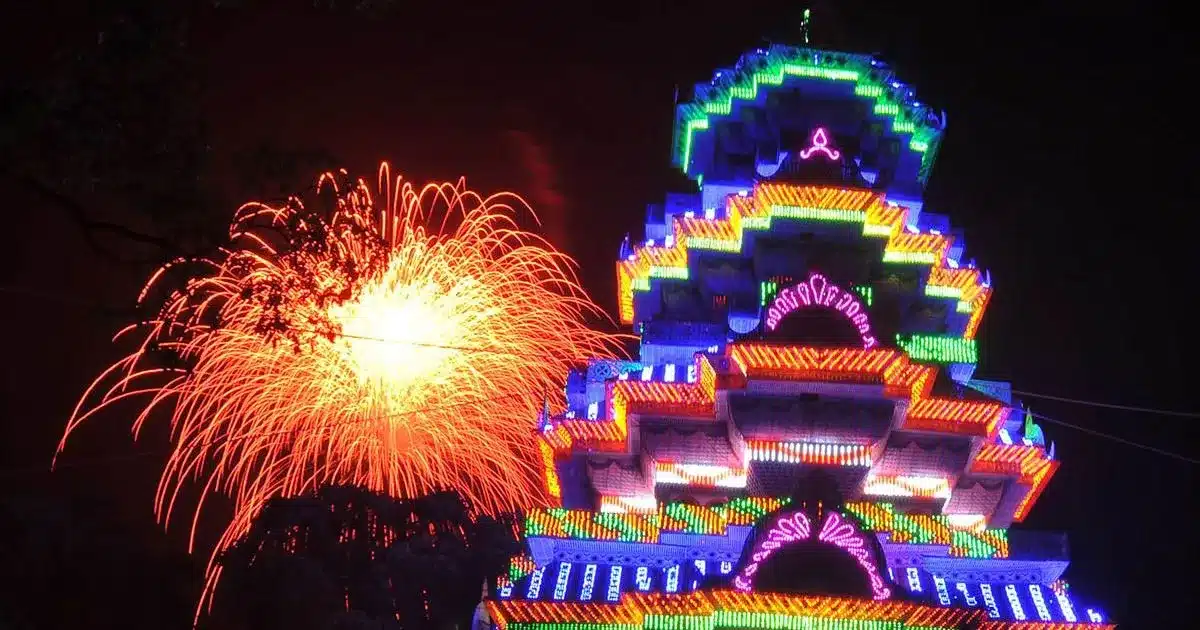
Chamayakazcha – The elephant accoutrements exhibition
For 36 hours, Chamayakazcha showcases the elaborate decorations and ornaments that adorn the elephants during the festival. This exhibition, featuring items like the golden elephant caparison (Nettipattam), ceremonial umbrellas, and fans made of peacock feathers, is prepared separately by Thiruvambady and Paramekkavu Devawsoms, offering a glimpse into the intricate preparations behind the Pooram’s grandeur.
Main Pooram celebrations
The festival peaks on the sixth day with processions from all ten temples converging at Vadakunnathan Temple to pay homage to Lord Shiva. The temple, though a mere spectator, facilitates the grand assembly, allowing the vibrant processions and traditional music to fill its grounds.
Farewell ceremony – Koodikazcha
On the final day, a poignant farewell ceremony takes place, where deities from the participating temples, escorted by their respective elephants and musicians, gather for a formal goodbye. This moment of mutual respect and promise of reunion encapsulates the spirit of Thrissur Pooram, leaving attendees and participants with memories to cherish until the next year’s festivities.
Important timings of Thrissur Pooram 2024
| Sunrise | April 19, 2024 6:06 AM |
| Sunset | April 19, 2024 6:45 PM |
| Moonrise | April 19, 2024 3:05 PM |
| Pooram Nakshatram Begins | April 19, 2024 10:57 AM |
| Poorva Phalguni Nakshatram Ends | April 20, 2024 2:04 PM |
The cultural significance of elephants in Thrissur Pooram and across Kerala
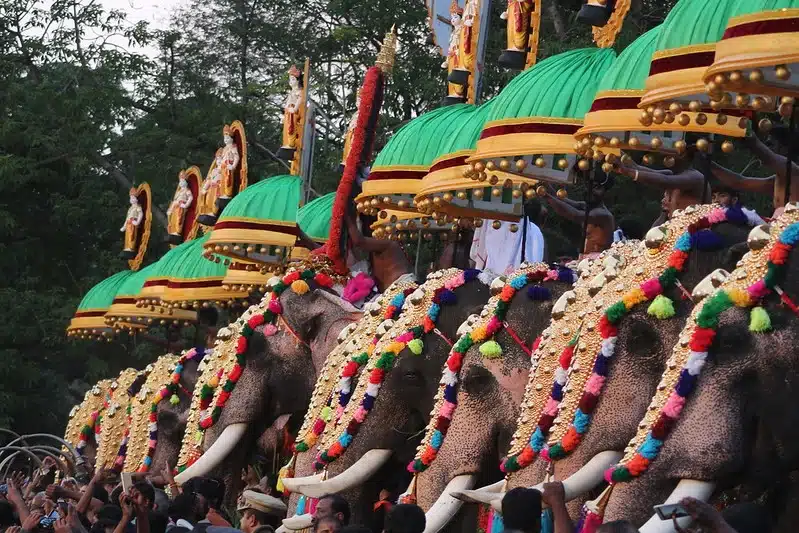
Elephants, revered as one of the most majestic creatures in nature, have always enjoyed a special place in the heart of Indian culture. They are symbolically linked to Ganesha, the deity with an elephant’s head, reflecting their deep-rooted significance in Indian spirituality and society. For centuries, these magnificent animals have been captured, domesticated, adored, and utilized for a myriad of purposes, fostering a profound and long-standing relationship with humans. In Thrissur, the commemoration of an elephant’s death anniversary, attended by fellow tuskers, might seem unusual to outsiders, yet it’s a tradition that seamlessly blends into the local culture.
The tradition of elephant processions has its origins traced back to the Thripunithura temple, belonging to the Cochin Royal Family, and has been a part of Kerala’s heritage for centuries. Historical accounts, such as those by Saint Vilwamangalam, recount the grandeur of elephant pageants dating back to the 1700s or 1800s. Sreedhar Vijayakrishnan’s research further underscores the longstanding tradition of incorporating elephants into festival celebrations, marking it as a practice that spans 200–250 years.
Writer N.S. Madhavan encapsulates the essence of Kerala’s relationship with elephants, comparing it to the British fondness for dogs—unparalleled and deeply ingrained in society. Kerala’s unique bond with elephants, nurtured through their roles in both the timber trade and temple festivals, highlights the state’s singular practice in India. Despite having one of the largest populations of wild elephants, Kerala’s inclusive culture and interfaith harmony have encouraged even churches and mosques to embrace Hindu festival traditions, like elephant processions and orchestral performances, in their celebrations.
This profound affinity for elephants reaches its zenith during Thrissur Pooram. Here, the elephant is not just a participant; it is celebrated as a symbol of prestige and cultural heritage, showcasing the deep-seated reverence Kerala holds for these gentle giants.
The rigorous selection process of Thrissur Pooram elephants
In the grandeur of Thrissur Pooram, not just any elephant can join the spectacle. The festival, a culmination of eight smaller poorams from nearby temples, follows a precise selection process for its elephants, adhering to specific numbers from each temple. This intricate tradition ensures that no more than 14 elephants represent the smaller temples, reserving the privilege of parading 15 elephants each exclusively for Thiruvambady and Paramekkavu. The meticulous selection process, a testament to the festival’s historical depth, seeks the finest elephants, particularly for the pivotal roles in the Kudamattom ceremony.
The criteria for elephants
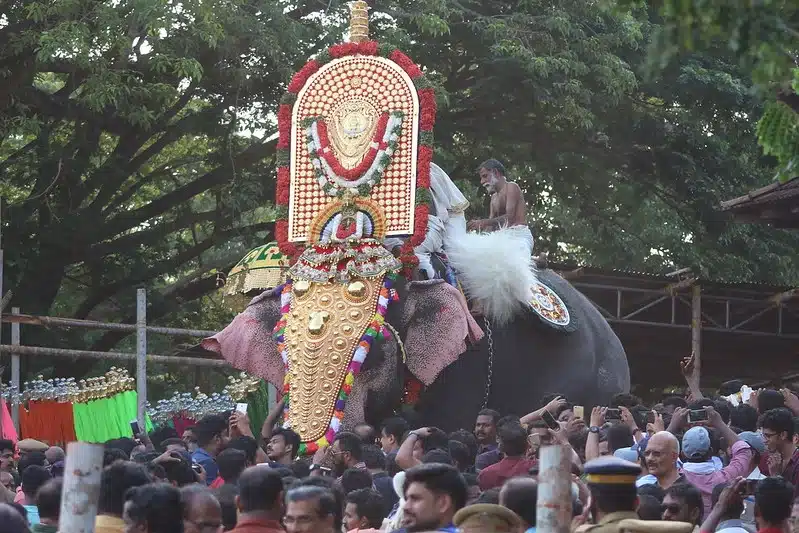
Contrary to the norm in animal selection, where foreign breeds are often favoured, it’s the local elephants, born and raised in the Western Ghats of Kerala, that are the celebrated participants of Thrissur Pooram. The criteria for selecting these majestic creatures are stringent, focusing on male elephants for their imposing height and majestic tusks, though females have their roles in certain rituals. Ideal candidates are between 25 to 55 years of age, maintaining a balance of youth and maturity, with allowances made for older elephants that remain in peak health.
Temperament is crucial; only those accustomed to large crowds and without a history of aggression are considered. Physical attributes play a significant role as well—height, ideally between 10 and 12 feet, is important but not the sole determinant of selection. According to experts like Sundar, the true essence of an elephant’s majesty lies in its appearance: a towering head with a broad forehead, a long trunk nearly grazing the ground, wide ears, long tusks curving upwards unblemished, and clear, expressive eyes. Even the length of the tail, which should ideally reach just to the ankle and not the ground, and the strength of the legs, bearing 18 nails in total, are scrutinized.
For elephant owners, having their elephants participate in Thrissur Pooram is a significant honor, enhanced by the global attention the festival attracts. The selection process is overseen by a committee of elephant experts in collaboration with the Devaswom Boards, ensuring only the best are chosen. The final roster of elephants is unveiled merely three days before the festival, heightening the anticipation and ensuring the continuation of this age-old tradition of excellence.
Culinary delights of Thrissur Pooram – A gastronomic journey
Cuisine plays a pivotal role in the Thrissur Pooram, adding flavor and fervor to the celebration. The festival showcases an array of traditional Kerala delicacies, offering a taste of the state’s rich culinary heritage. Attendees can savor a variety of dishes, from staple vegetarian options like rice, sambar, avial (a hearty vegetable stew), thoran (a vibrant stir-fried dish), and pachadi (a coconut-based curry), to succulent non-vegetarian items such as chicken curry and fish fry. Sweets like payasam (a creamy rice pudding) and laddu (sweetened flour balls) are festival favorites, delighting the taste buds of many.
A highlight of Thrissur Pooram food is the “Kudamattam Sadhya,” an elaborate feast that marks the culmination of the festivities. This grand meal is a spectacle in itself, served on plantain leaves and featuring an array of over 20 different dishes, including a variety of curries, chutneys, pickles, and desserts. Held on the temple premises, the Sadhya is a testament to inclusivity, welcoming all visitors to partake, irrespective of their social or religious backgrounds. Preparation of the feast is a communal effort, with devotees and volunteers coming together to cook and serve. This collective endeavour not only feeds the body but also nurtures the spirit of community and togetherness.
The essence of religious harmony in Thrissur Pooram
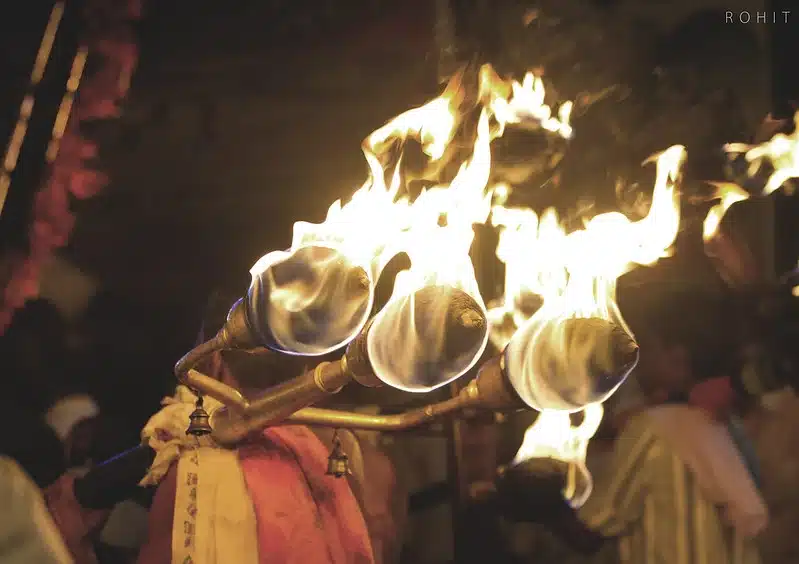
Thrissur Pooram stands out not just as a religious observance of the Hindu community in Kerala but has blossomed into a secular festivity, drawing participation from all walks of life. This festival transcends religious boundaries, emerging as a beacon of communal harmony and collective joy. It’s a vibrant showcase of Kerala’s rich cultural tapestry, where people irrespective of their religious and community affiliations come together in celebration.
Integral to this grand festival are the majestic elephants, adorned and revered, carrying participants from the temples involved in the festivities. Thrissur Pooram is famous for its spirit of competition, primarily among the district’s temples, each vying to present the most splendid display of nettipattam (elephant caparisons) and parasols, all meticulously crafted anew each year.
Remarkably, the making of the pandals, a pivotal aspect of the festival’s preparations, sees significant contributions from the Muslim community, showcasing the inclusive spirit of the celebrations. Similarly, the Christian community and churches play a crucial role by supplying materials for the Kudamattom umbrellas, further solidifying the festival’s foundation in communal unity. Through such collaborative efforts, Thrissur Pooram stands as a testament to the harmonious coexistence and mutual respect that defines Kerala’s societal fabric.
Thrissur Pooram – A gateway to Kerala’s heart
As the curtain falls on the vibrant tableau of Thrissur Pooram, one cannot help but reflect on the breathtaking beauty and sheer scale of this magnificent festival. To experience Thrissur Pooram is to see the very essence of Kerala’s traditions come alive in a whirlwind of colour, music, and communal joy. It’s an opportunity to step into the flow of history, to be part of a living tradition, evolving yet timeless in its appeal.
Catching Thrissur Pooram festival in person is a once-in-a-lifetime experience, offering not just a glimpse into Kerala’s rich cultural heritage, but also an invitation to be part of something much larger than oneself. It’s a chance to immerse in the collective spirit of a community coming together, transcending religious and social boundaries to celebrate life’s ephemeral beauty. The best way to fully embrace this extraordinary event is by booking a Savaari in Thrissur, ensuring you navigate the festivities with ease, comfort, and the insider’s view of a local.
But the allure of Thrissur extends far beyond the Pooram. This city, with its warm-hearted people, ancient temples, and lush landscapes, acts as a gateway to the best of Kerala. From the tranquil backwaters to the aromatic spice gardens, from the enchanting art forms to the spicy delicacies, Thrissur is the starting point for explorations into the verdant heart of God’s Own Country.
Exploring Thrissur – Beyond the Pooram Festival
Thrissur, often hailed as the cultural capital of Kerala, is a treasure trove of history, spirituality, and natural beauty. While the Thrissur Pooram temple captivates visitors with its grandeur and spectacle, the city and its surroundings offer a wealth of experiences, including beautiful religious sites that dot its landscape, and promise to enrich every traveller’s journey. Here’s a guide to some of the must-visit places in Thrissur that showcase the diversity and charm of this historic city.
Vadakkunnathan Temple
A beacon of Kerala’s ancient religious architecture, the Vadakkunnathan Temple is dedicated to Lord Shiva. It’s the oldest temple in the state, surrounded by monumental towers and adorned in the traditional Kerala architectural style.
Dolours Basilica
Known fully as the Basilica of Our Lady of Dolours, this grand church stands out with its striking white facade. It’s a remarkable structure in the cityscape of Thrissur, inviting visitors to marvel at its design and spiritual ambiance.
Shakthan Thampuran Palace
Exhibiting a blend of Kerala and Dutch architectural styles, the Shakthan Thampuran Palace is a historical landmark. Rebuilt in 1795, it replaces the earlier Vadakkekara Palace and offers a glimpse into the regal past of Cochin.
Paramekkavu Bhagavathy Temple
This temple has the state’s largest Goddess Vaishnavi shrine, making it a pivotal spiritual site in Thrissur. It’s especially famous for its participation in the Thrissur Pooram festival.
Vilangan Kunnu
Often referred to as the ‘oxygen jar’ of Thrissur, Vilangan Kunnu is a hillock offering panoramic views of the city and the Thrissur Kole Wetlands. It’s a preferred picnic spot for those looking to enjoy nature’s tranquility.
Guruvayur Sree Krishna Temple
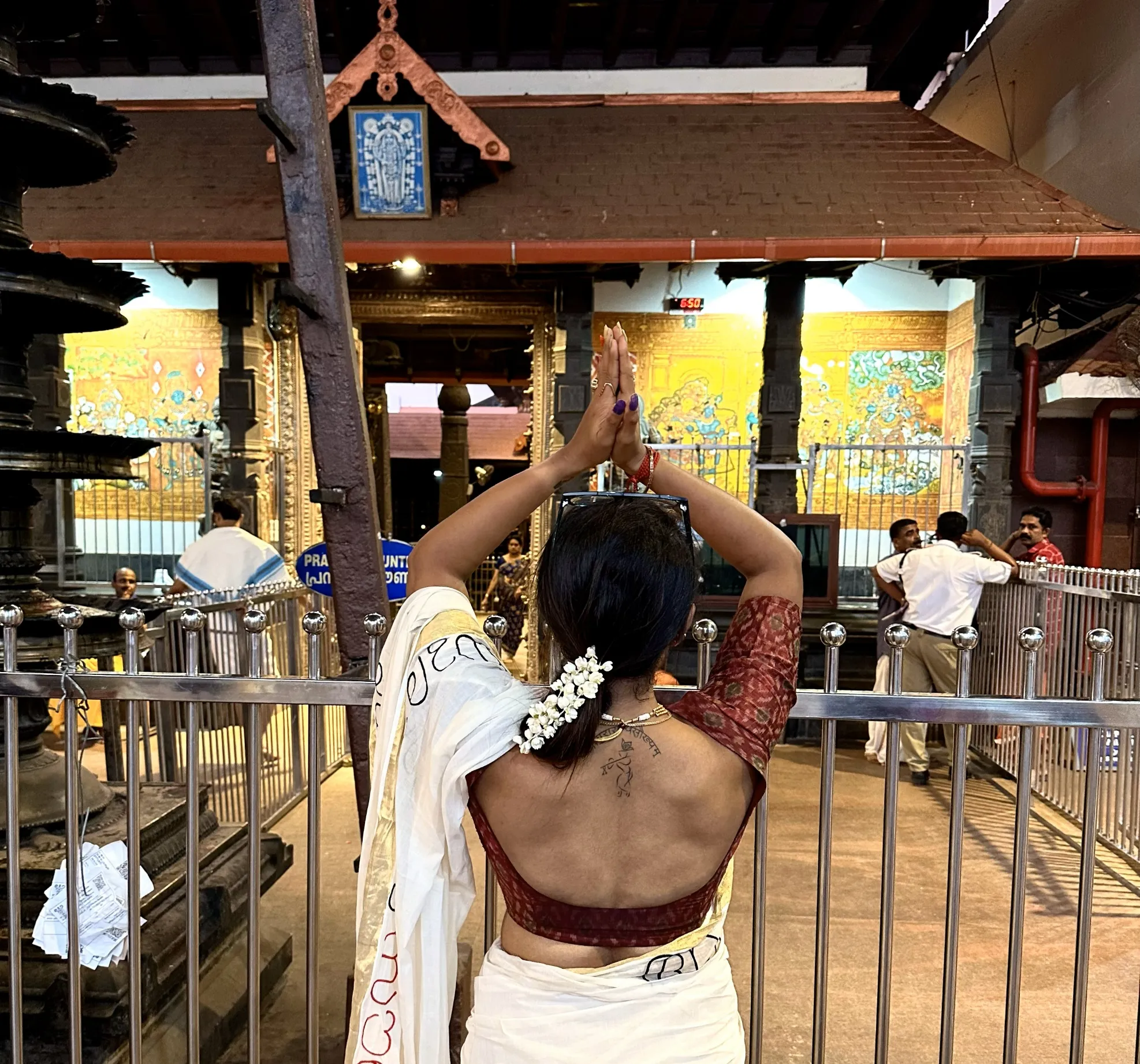
Located in the town of Guruvayur near Thrissur, this temple is a testament to the devout spirituality and rich craftsmanship of Kerala, dedicated to Lord Krishna.
Punnathur Kotta
An Elephant Sanctuary housed in a former palace, Punnathur Kotta is home to the largest number of captive elephants in the state, currently housing about 59 of these majestic creatures.
Nehru Park
A delightful children’s park in the heart of Thrissur, named after Jawaharlal Nehru, India’s first Prime Minister. The park provides joy and amusement to its young visitors, reflecting Nehru’s affection for children.
Athirappilly Waterfalls
Situated on the city’s outskirts, the Athirappilly Waterfalls stand as Kerala’s largest, with a height of 80 ft and a width of 330 ft. They offer a spectacular natural retreat for visitors.
Why visit Thrissur with Savaari?
Exploring Thrissur and experiencing the grandeur of Thrissur Pooram live becomes a journey of discovery with Savaari. While the festival attracts large crowds, making it challenging to find optimal spots for viewing, traveling with Savaari changes the game. Your Savaari driver, armed with local insights, navigates you to prime locations, offering a unique perspective on the festivities. More than a driver, they serve as your personal guide, enriching your trip with fascinating facts and local folklore.
The comfort and convenience provided by Savaari extend beyond just transportation. Your driver knows just where to take you for a delightful culinary experience and introduces you to Thrissur’s hidden gems. By downloading the Savaari app, you can embark on an unforgettable voyage into the heart of the festival and the beauty that is Thrissur, ensuring your visit is as comfortable as it is memorable.
Last Updated on March 28, 2024 by Shabari Shankar



